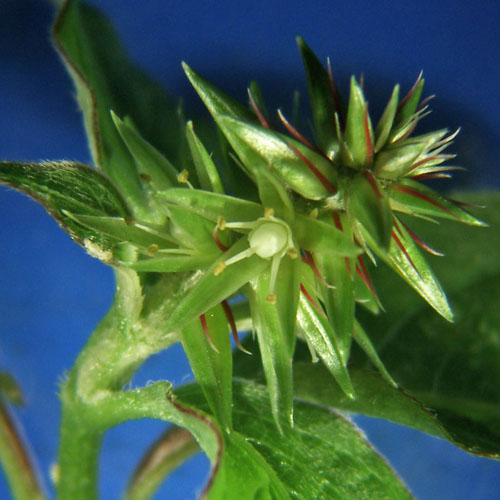
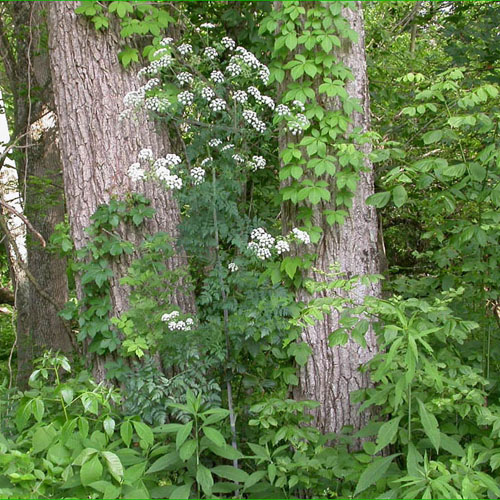
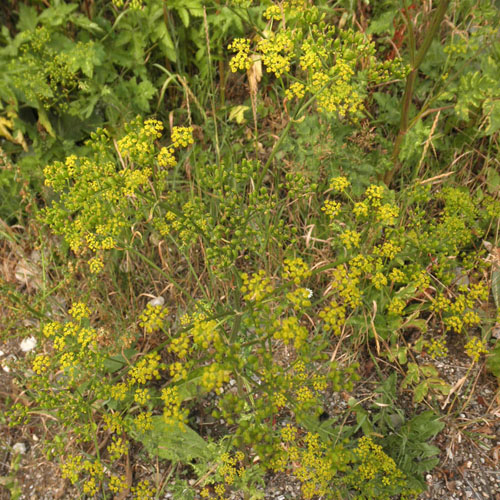
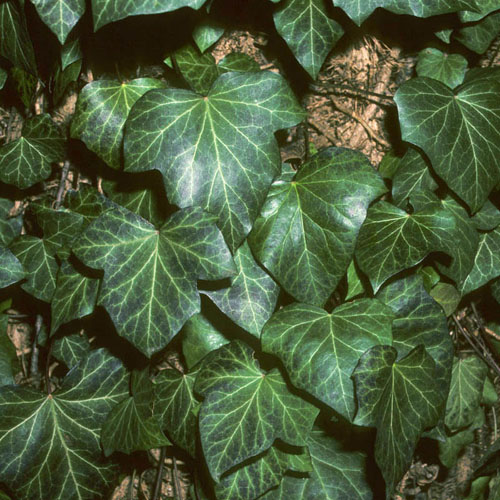

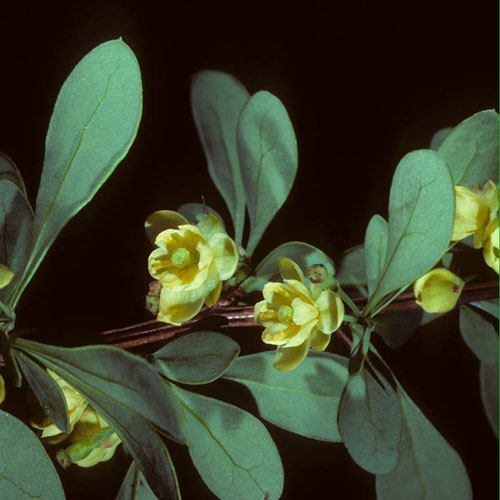
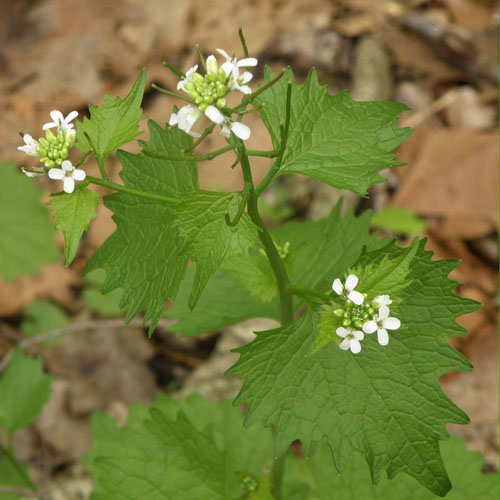
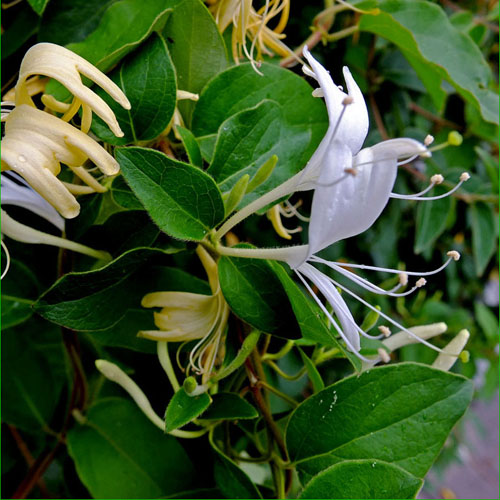
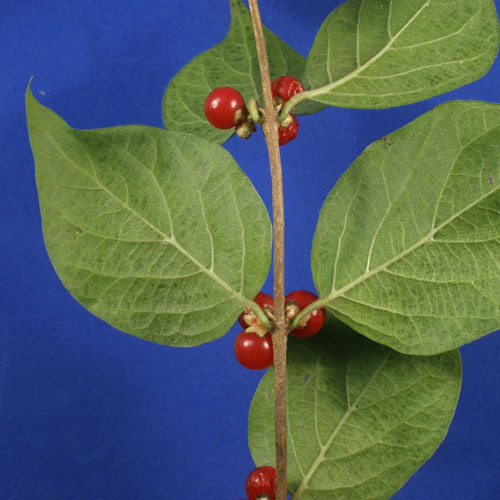
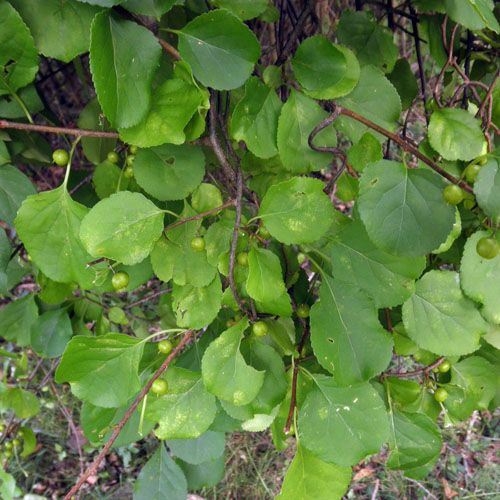


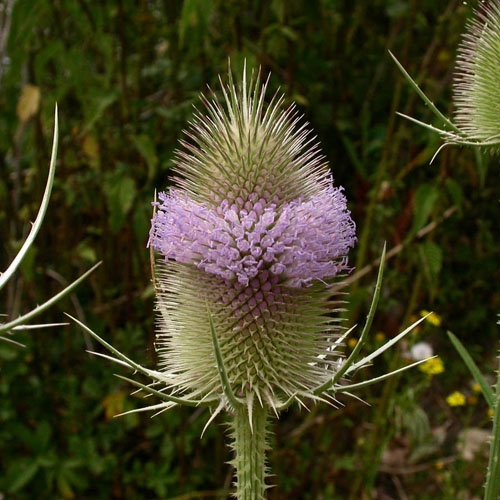

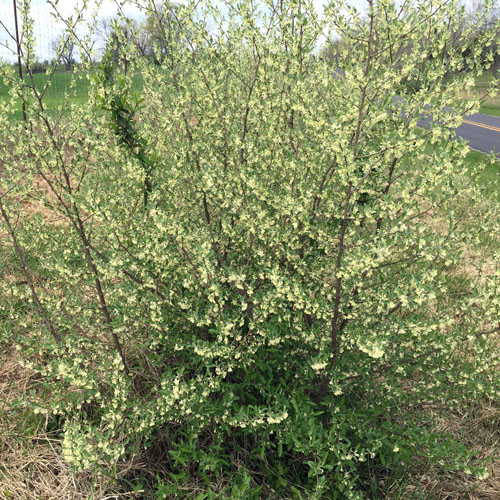
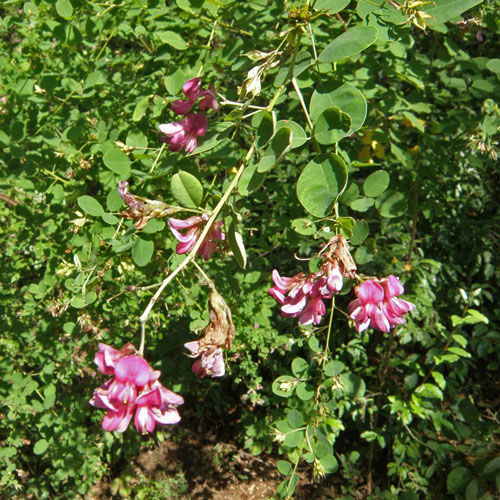
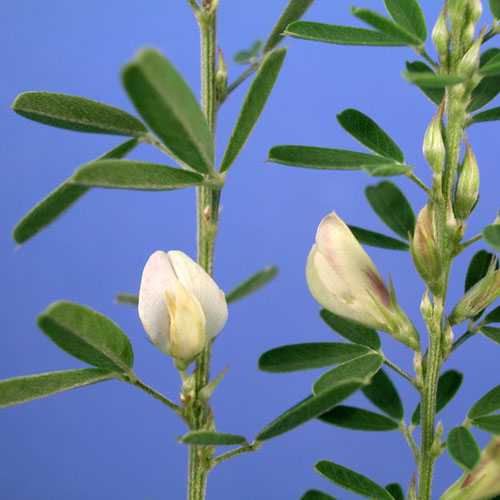
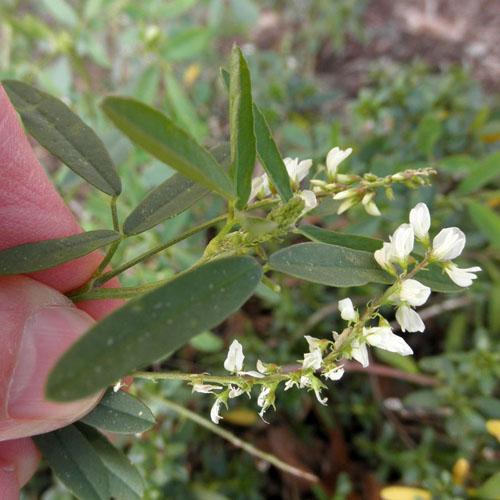
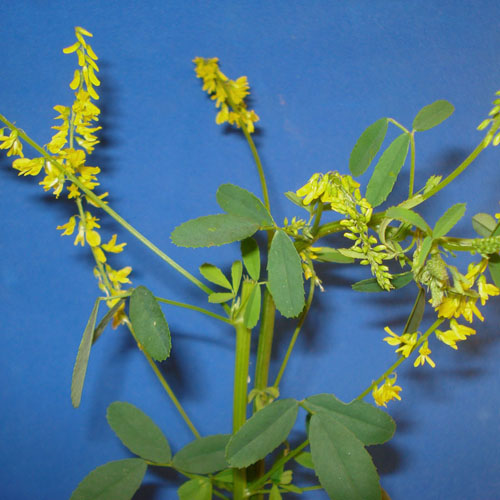
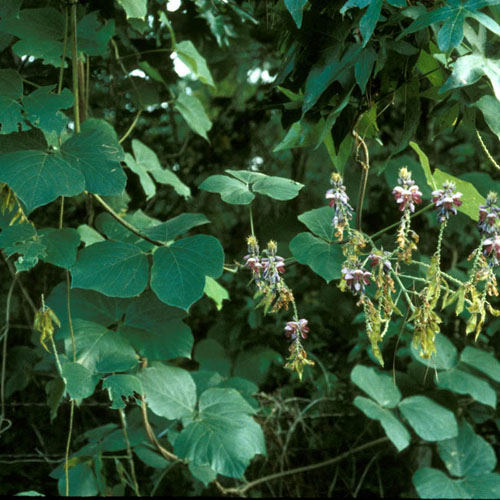
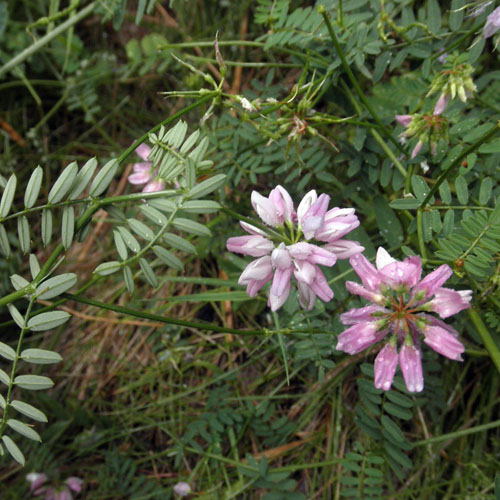


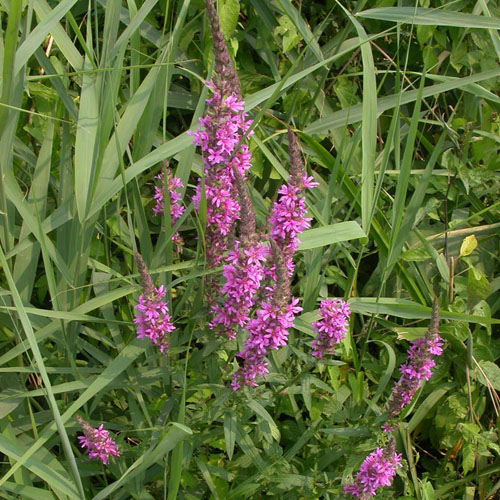
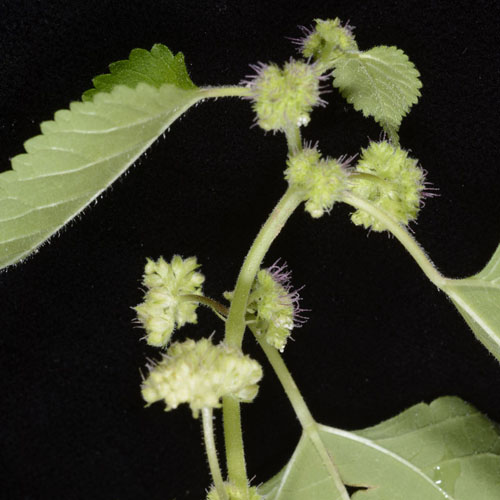
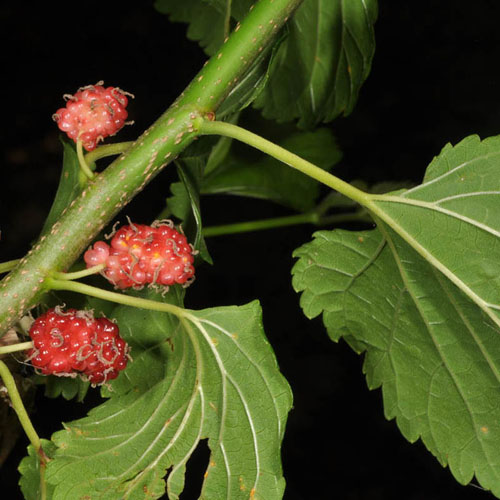
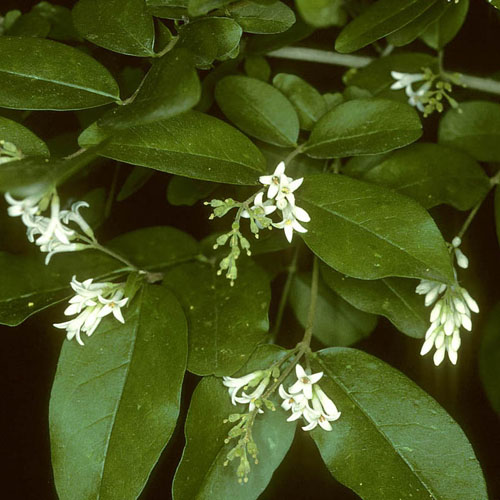
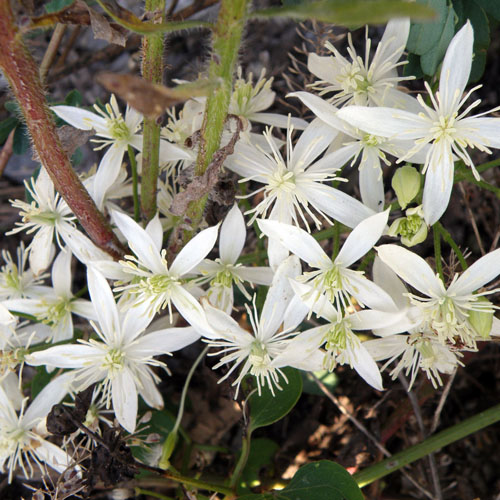

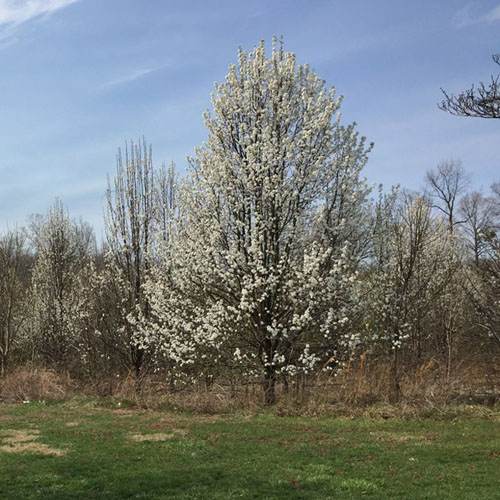
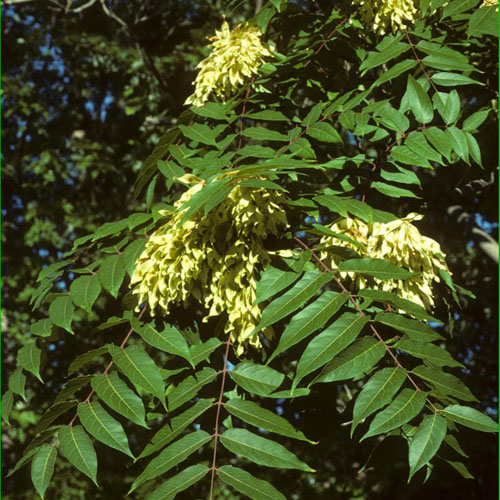
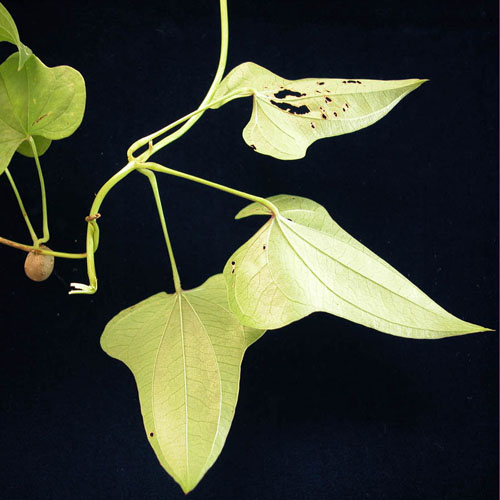
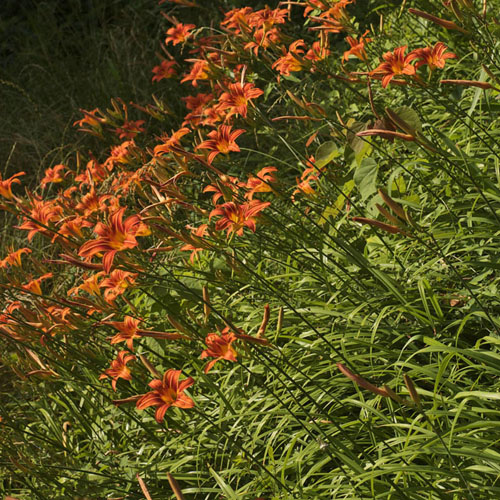

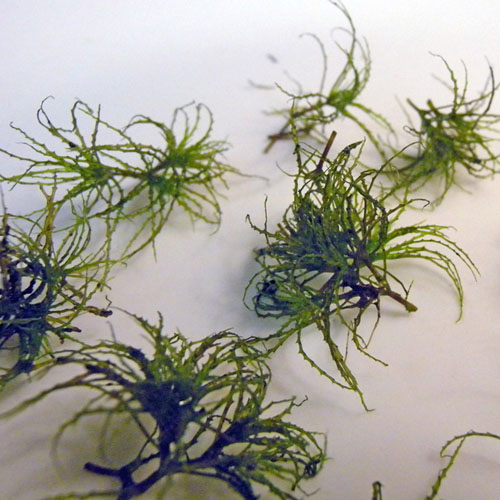
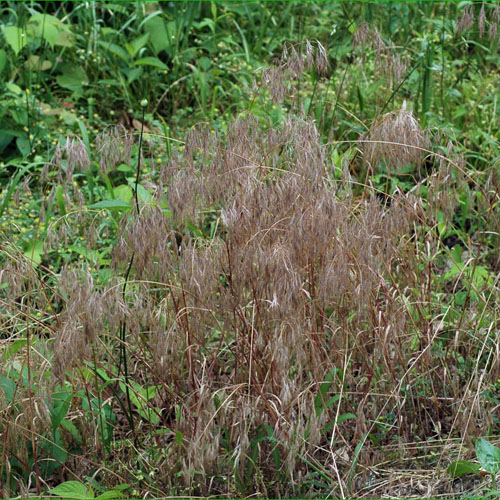
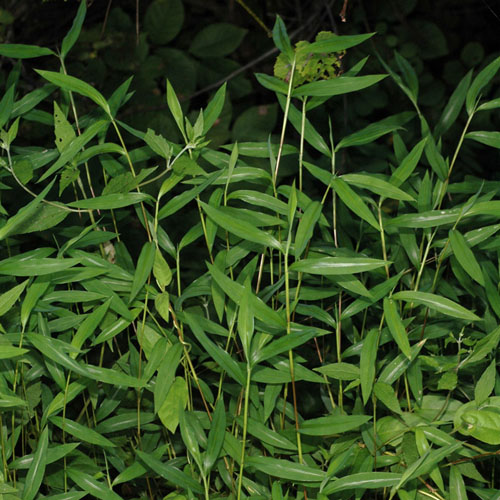

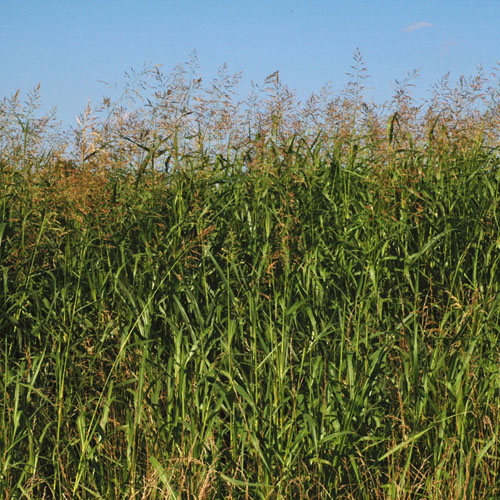
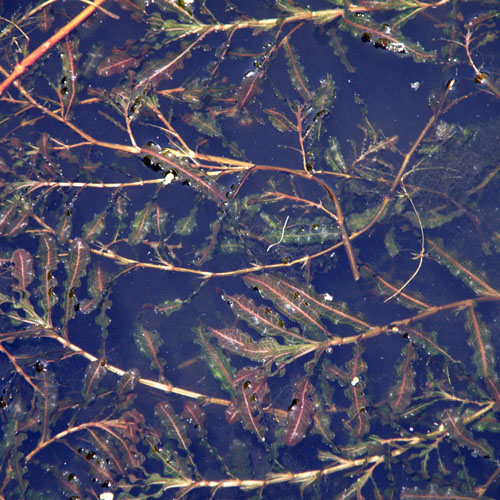
| Home - Checklist of the Plants from the Crab Orchard National Wildlife Refuge |
Of the 980 species of vascular plants
found in the Crab Orchard National Wildlife Refuge (CONWR), about 190
are considered "alien", that is, introduced from somewhere outside the
region and propagating. Among these plants are some whose introduction
causes economic or environmental damage and even direct harm to human
health. These species are called invasive. Exactly how one defines
"damage" or "harm" can be debated, but generally biologists refer to
changes in the landscape that result in the loss of biodiversity. Many
aliens are now considered "naturalized", that is they have been
incorporated into the flora but have not displaced native species (to a
great extent) or caused economic harm. Examples of these include
dandelion (Taraxacum officinale), Heal-all (Prunella
vulgaris), and sweet flag (Acorus calamus). The full
list of alien and invasive species for the CONWR can be obtained here (Excel
file).
Exactly why the invasive species is
able to out-compete native species is still not fully understood,
however, it is clear in some cases that the nonnative species does not
experience the same selective environment, particularly from herbivorous
insects. Have you ever wondered why the leaves of your Bradford pear
tree are nearly intact at the end of the growing season whereas native
trees show lots of evidence of feeding? An excellent book that gives
ample examples of this phenomenon is Bringing Nature Home
(2007) by Douglas Tallamy who also provides justification for planting
native plants. Another excellent book is Invasive Plants by
Sylvan R. Kaufman and Wallace Kaufman (2012) which is a guide to
identification of North
American invasive plants as well as information about their impacts
and control.
For the state of Illinois, the following are valuable references:
• Osborne, T. and B. Steffen. Invasive plants of southern Illinois. River to River Cooperative Weed Management Area. Published by the Illinois Natural History Survey, Institute of Natural Resource Sustainability. (pdf file)
• Gage, K. 2014. Management of invasive plants of southern Illinois. River to River Cooperative Weed Management Area. (pdf)
• Gage, K., T. Bethke, and C. Evans. 2017. Management of invasive plants and pests of Illinois.
• Invasive
Plant Atlas of the United States. Website developed by University
of Georgia - Center for Invasive
Species and Ecosystem Health in cooperation with other
organizations.
From the list of alien species present
on the CONWR, we have selected 40 that meet the criteria outlined above
as being invasive (thanks to Chris Evans for input!). This list should
be considered a "work in progress" that is likely to change in the
future. New alien species are constantly being introduced into southern
Illinois (mainly because of human activities), but only some of these
advance to invasive status. The species are arranged first by
eudicot/monocot and then alphabetical by family and species. Click on
the thumbnail images to see more photos (the link takes you to
PhytoImages).
| EUDICOTS | |
| Achyranthes japonica
(Amaranthaceae) Japanese Chaff Flower. Introduced (Asia). Fact
Sheet on ecology and control of this species. |
 |
 |
Conium maculatum
(Apiaceae) Poison Hemlock. Introduced (Europe) |
| Pastinaca sativa
(Apiaceae) A few large, dense patches of this occur on the refuge.
(Apiaceae) Wild Parsnip. Introduced (Europe) |
 |
 |
Hedera helix
(Araliaceae) English Ivy. Introduced (Europe) |
| Carduus nutans
(Asteraceae) Musk / Nodding Thistle. Introduced (Europe) |
 |
 |
Berberis thunbergii
(Berberidaceae)
Japanese Barberry. Very problematic throughout Illinois,
present on the refuge, thus it is a priority species
Introduced (Asia) |
| Alliaria petiolata
(Brassicaceae) Garlic Mustard. Introduced (Europe) |
 |
 |
Lonicera japonica
(Caprifoliaceae) Japanese Honeysuckle. Introduced (Asia) |
| Lonicera maackii
(Caprifoliaceae) Amur (Bush) Honeysuckle. Introduced (Asia) |
 |
 |
Celastrus
orbiculatus (Celastraceae) Oriental
(Round-leaved) Bittersweet. Introduced (Asia) |
| Euonymus alatus
(Celastraceae) Found on refuge in several locations; a high
priority species (Celastraceae) Winged burning bush. Introduced
(Asia) |
 |
 |
Euonymus fortunei
(Celastraceae) Wintercreeper, Climbing Euonymus. Introduced (Asia) |
| Dipsacus fullonum
(Dipsacaceae) Common Teasel. Introduced (Europe) |
 |
 |
Dipsacus laciniatus
(Dipsacaceae) Not as common as common teasel but still found on
refuge (Dipsacaceae) Cutleaf teasel. Introduced (Europe) |
| Elaeagnus umbellata
(Elaeagnaceae) Autumn Olive. Introduced (Eurasia) |
 |
 |
Lespedeza bicolor
(Fabaceae) Several large stands of this occur on the refuge.
(Fabaceae) Shrub Lespedeza. Introduced (Asia) |
| Lespedeza cuneata
(Fabaceae) Sericea Lespedeza, Chinese Bush-Clover. Introduced
(Asia) |
 |
 |
Melilotus albus
(Fabaceae) Known for being problematic in open areas in southern
Illinois. Seen in young prairie plantings on the refuge.
(Fabaceae) White Sweet Clover. Introduced (Eurasia) |
| Melilotus
officinalis (Fabaceae) Known for being
problematic in open areas in southern Illinois. Seen in young
prairie plantings on the refuge. (Fabaceae) Yellow Sweet Clover.
Introduced (Europe) |
 |
 |
Pueraria montana
(Fabaceae) Kudzu-vine. Introduced (Asia) |
| Securigera varia
(Fabaceae) Crown Vetch. Introduced (Europe) |
 |
 |
Myriophyllum
spicatum (Haloragaceae) Amazon Water Milfoil.
Introduced (tropics) |
| Perilla frutescens
(Lamiaceae) Beefsteak Plant. Introduced (Asia) |
 |
 |
Lythrum salicaria
(Lythraceae) Purple Loosestrife. Introduced (Europe) |
| Fatoua villosa (Moraceae)
Apparently spreading rapidly (Moraceae) Mulberry Weed, Hairy
Crabweed. Introduced (Europe) |
 |
 |
Morus alba
(Moraceae) White Mulberry. Introduced (Asia) |
| Ligustrum vulgare
(Oleaceae) Common (European) Privet. Introduced (Europe) |
 |
 |
Clematis terniflora
(Ranunculaceae) Yam-leaved Clematis. Introduced (Asia) |
| Rosa multiflora
(Rosaceae) Multiflora Rose. Introduced (Asia) |
 |
 |
Pyrus calleryana
(Rosaceae) Spreading rapidly across the state and is a common
invader of tree plantings and open areas on the refuge (Roseaceae)
Callery pear. Introduced (Asia) |
| Ailanthus altissima
(Simaroubaceae) Tree-of-Heaven. Introduced (Asia) |
 |
| MONOCOTS | |
 |
Dioscorea
polystachya (Dioscoreaceae) Chinese Yam. Big
stands of this species occur on the refuge. Problematic
invader. Introduced (Asia) |
| Hemerocallis fulva (Hemerocallidaceae) Orange Day-Lily. Introduced (Eurasia) |  |
 |
Egeria densa (Hydrocharitaceae) Giant / Brazilian Waterweed. Introduced (South America) |
| Najas minor (Najadaceae) Eutrophic Water-Nymph. Introduced (Eurasia) |  |
 |
Bromus tectorum (Poaceae) Downy Cheat Grass. Introduced (Europe) |
| Microstegium
vimineum (Poaceae) Stilt Grass, Japanese
stiltgrass. Introduced (Asia). Field
guide to identification of this species. |
 |
 |
Phragmites australis (Poaceae) Reed. Native and Introduced (Native to Old World) |
| Sorghum halepense (Poaceae) Johnsongrass. Introduced (Eurasia) |  |
 |
Potamogeton crispus (Potamogetonaceae) Curly Pondweed. Introduced (Europe) |